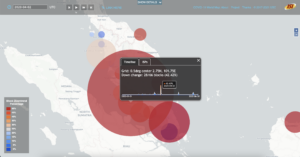We published a new poster titled “Chhoyhopper: A Moving Target Defense with IPv6” by A S M Rizvi (USC/ISI) and John Heidemann (USC/ISI) at ACSAC-2021. We presented our poster virtually using a video. We provide chhoyhopper as open source–try it out!

From the abstract:
Services on the public Internet are frequently scanned, then subject to brute-force and denial-of-service attacks. We would like to run such services stealthily, available to friends but hidden from adversaries. In this work, we propose a moving target defense named “Chhoyhopper” that utilizes the vast IPv6 address space to conceal publicly available services. The client and server hop to different IPv6 addresses in a pattern based on a shared, pre-distributed secret and the time of day. By hopping over a /64 prefix, services cannot be found by active scanners, and passively observed information is useless after two minutes. We demonstrate our system with the two important applications—SSH and HTTPS.
This work is supported, in part, by DHS HSARPA Cyber Security Division via contract number HSHQDC-17-R-B0004-TTA.02-0006-I, and by DARPA under Contract No. HR001120C0157.
